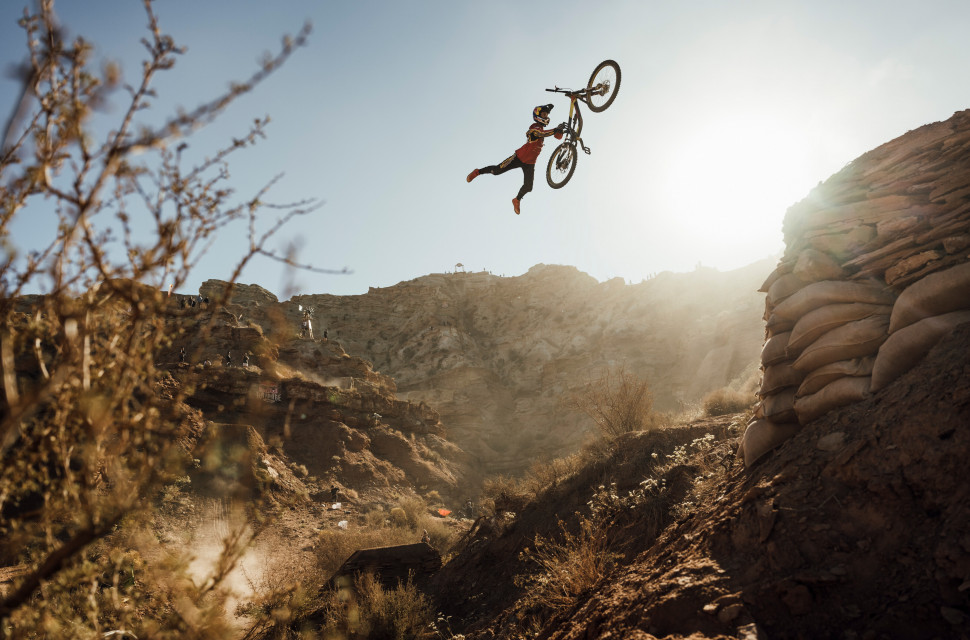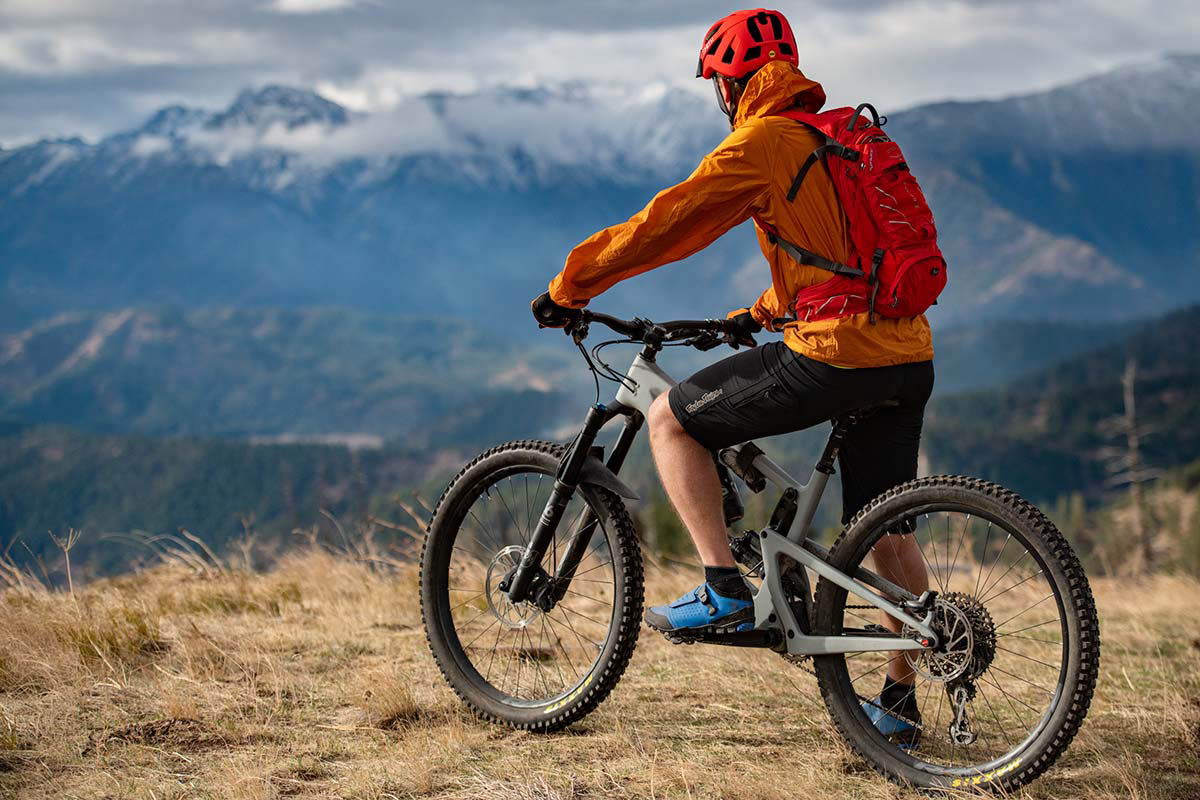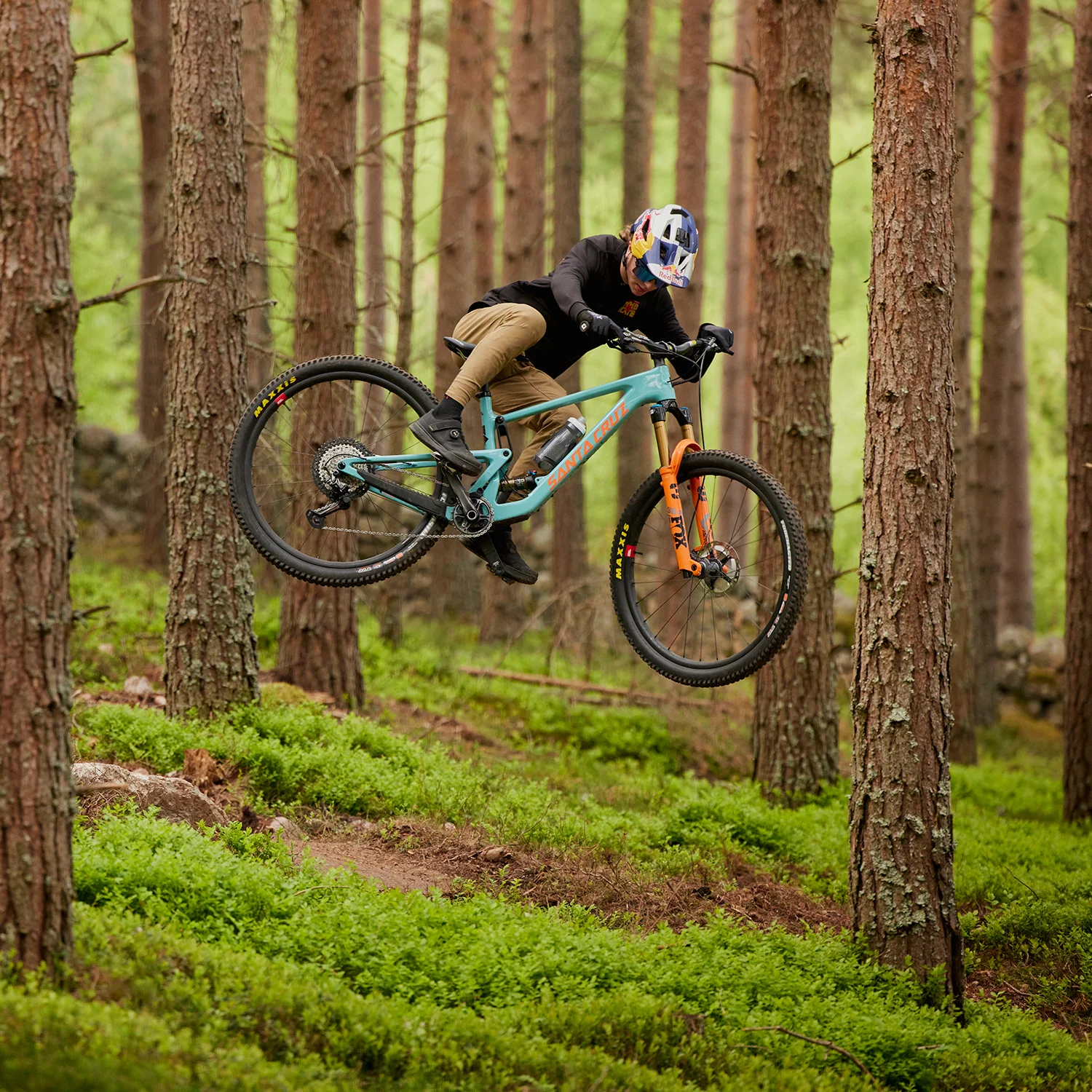Mountain biking has a rich and fascinating history that dates back to the 1970s. It all began in Marin County, California, where a group of thrill-seeking cyclists started modifying their bikes to tackle the rugged terrain of Mount Tamalpais. These early pioneers, known as the “Repack” riders, would race down the mountain, testing their skills and pushing the limits of their equipment. The term “Repack” comes from the need to repack the bearings in their hubs after each run due to the intense heat generated by the high-speed descents.
As the sport gained popularity, manufacturers began producing specialized mountain bikes designed to handle the demands of off-road riding. The 1980s saw the introduction of suspension forks and disc brakes, further enhancing the capabilities of mountain bikes. In the 1990s, cross-country and downhill racing became organized, leading to the establishment of the first mountain biking competitions.
Today, mountain biking has evolved into a diverse and thriving sport, with disciplines ranging from cross-country and enduro to downhill and freeride. It has also become a popular recreational activity, attracting riders of all ages and skill levels.
The evolution of mountain biking has been marked by technological advancements and a growing community of enthusiasts. From its humble beginnings on the slopes of Mount Tamalpais to its global presence today, mountain biking continues to captivate riders with its sense of adventure and freedom.
The Anatomy of a Mountain Bike
A mountain bike is a specialized off-road bicycle designed to handle rough terrain and challenging trails. It consists of several key components that work together to provide a smooth and responsive ride. The frame is the foundation of the bike, typically made from aluminum, carbon fiber, or steel. It is designed to be strong and durable, with geometry optimized for off-road performance. The wheels are another crucial element, featuring wide rims and knobby tires for improved traction and stability.
The suspension system is a defining feature of modern mountain bikes, with options ranging from hardtail (front suspension only) to full-suspension (front and rear suspension). Suspension forks and rear shocks help absorb impacts and maintain traction on uneven surfaces, enhancing comfort and control for the rider. The drivetrain includes the gears, chain, and crankset, allowing the rider to pedal efficiently and navigate varying terrain. Most mountain bikes are equipped with multiple gears to accommodate steep climbs and fast descents.
Other components such as brakes, handlebars, and saddle contribute to the overall performance and comfort of the bike. Disc brakes provide reliable stopping power in all conditions, while wide handlebars offer better handling and control. The saddle is designed for comfort during long rides, with options for different riding styles and preferences. Understanding the anatomy of a mountain bike is essential for choosing the right bike and maintaining it for optimal performance on the trails.
Choosing the Right Mountain Bike for You
Selecting the right mountain bike involves considering various factors such as riding style, terrain, budget, and personal preferences. There are several types of mountain bikes to choose from, each tailored to specific disciplines and rider needs. Cross-country bikes are designed for efficiency and speed on smooth trails, featuring lightweight frames and fast-rolling tires. Trail bikes offer a balance of climbing prowess and descending capability, making them versatile for a wide range of terrain.
Enduro bikes are built for aggressive riding and technical descents, with longer travel suspension and robust components. Downhill bikes are purpose-built for high-speed descents and jumps, featuring heavy-duty frames and full suspension with ample travel.
Fat bikes are equipped with oversized tires for enhanced traction on snow, sand, or loose terrain, making them ideal for exploring diverse landscapes. Electric mountain bikes (e-bikes) have gained popularity for their pedal-assist capabilities, providing an extra boost for climbing or covering long distances.
| Riding Style | Key Features | Ideal Bike Type | Additional Considerations |
|---|---|---|---|
| Cross-Country (XC) | Lightweight, efficient, steep geometry, climber-friendly | XC Hardtail or Full Suspension (short travel, 100-120mm) | Lockout suspension for climbs, focus on fast-rolling tires |
| Trail Riding | Versatile, balanced, playful | Trail Hardtail or Full Suspension (120-140mm) | Dropper post for varied terrain, grippy but efficient tires |
| Enduro | Aggressive descender, capable climber | Enduro Full Suspension (150-170mm) | Slack geometry, burly components, wide handlebars |
| Downhill | Pure downhill performance, slack geometry, long travel | Downhill Full Suspension (180-200mm+) | Double crown fork, powerful brakes, specific DH tires |
| Dirt Jumping | Strong, agile, low standover height | Dirt Jump Hardtail | Single speed, low gearing, stiff suspension, small frame sizes |
| Fat Biking | Wide tires for floatation on snow, sand, etc. | Fat Bike Hardtail or Full Suspension | Larger frame size to accommodate wide tires, specific fat bike gear |
When choosing a mountain bike, it’s important to test ride different models and sizes to find the right fit. Consider factors such as frame material, wheel size, suspension type, and component specifications based on your riding goals and preferences. Consulting with knowledgeable staff at a reputable bike shop can also provide valuable guidance in selecting the best mountain bike for your needs.
Essential Gear for Mountain Biking
Mountain biking requires essential gear to ensure safety, comfort, and performance on the trails. A properly fitting helmet is a non-negotiable piece of equipment that protects the head in case of falls or collisions. Look for a helmet with adequate ventilation, adjustable fit system, and extended coverage for added protection. Cycling-specific clothing such as moisture-wicking jerseys, padded shorts, and breathable gloves can enhance comfort and mobility during rides.
Protective eyewear is essential for shielding the eyes from debris, UV rays, and glare while maintaining clear vision on the trail. Cycling shoes with grippy soles provide efficient power transfer and traction when pedaling or walking on uneven surfaces. Flat pedals or clipless pedals offer different advantages based on rider preference and riding style. Carrying a hydration pack or water bottle is crucial for staying hydrated during rides, especially in hot or challenging conditions.
Carrying essential tools such as a multi-tool, tire levers, spare tube, pump or CO2 inflator, and patch kit can help address mechanical issues or flat tires on the trail. A saddle bag or frame bag provides convenient storage for these tools and other small items such as snacks or a phone. Additionally, consider investing in protective gear such as knee pads, elbow pads, and body armor for added confidence when tackling technical terrain or pushing personal limits.
Safety Tips for Mountain Biking
Mountain biking is an exhilarating activity that comes with inherent risks, making safety a top priority for riders of all levels. Proper bike maintenance is essential for ensuring reliable performance on the trails. Regularly inspect your bike for loose bolts, worn components, tire pressure, and brake function before each ride. Familiarize yourself with trail etiquette and regulations in your riding area to promote responsible riding behavior and minimize conflicts with other trail users.
Riding within your skill level and gradually progressing to more challenging terrain can help prevent accidents and injuries. Practicing fundamental skills such as body positioning, braking technique, cornering, and obstacle negotiation can improve confidence and control on the bike. Always wear appropriate safety gear including a helmet, gloves, eyewear, and protective clothing to mitigate the impact of falls or crashes.
Maintain situational awareness by scanning ahead for obstacles, trail features, other riders, and wildlife while riding. Communicate with fellow riders using clear signals or verbal cues to indicate your intentions or warn of potential hazards. Be mindful of changing trail conditions such as weather, visibility, or trail maintenance that may affect your ride experience. Lastly, ride with a buddy or let someone know your planned route and estimated return time when exploring new trails or riding in remote areas.
The Benefits of Mountain Biking
Mountain biking offers a myriad of physical, mental, and social benefits that contribute to overall well-being and enjoyment. The cardiovascular workout provided by mountain biking helps improve heart health, endurance, and stamina while burning calories and reducing stress levels. Riding off-road challenges balance and coordination as riders navigate varying terrain features such as rocks, roots, berms, and jumps.
The outdoor nature of mountain biking provides opportunities for fresh air, sunlight exposure, and connection with nature that can enhance mood and mental clarity. Exploring new trails or destinations on a bike fosters a sense of adventure and discovery while promoting an active lifestyle. Engaging in mountain biking can also lead to social connections through group rides, events, or joining a local cycling community.
The sense of accomplishment from conquering challenging climbs or descents on the trail can boost confidence and self-esteem. Mountain biking encourages problem-solving skills as riders navigate technical features or overcome obstacles with creativity and determination. The thrill of speed and adrenaline rush from fast descents can provide an exhilarating experience that adds excitement to everyday life.
Exploring the Best Mountain Biking Trails
The world is home to countless breathtaking mountain biking trails that cater to riders of all abilities and preferences. From scenic singletrack through lush forests to rugged alpine descents with panoramic views, there are endless options for exploring diverse landscapes on two wheels. Some iconic mountain biking destinations include Moab in Utah, Sedona in Arizona, Whistler in British Columbia, Crested Butte in Colorado, Finale Ligure in Italy, Rotorua in New Zealand, and Chamonix in France.
These locations offer an array of trails ranging from beginner-friendly loops to technical challenges that push experienced riders to their limits. National parks such as Zion National Park in Utah or Pisgah National Forest in North Carolina provide access to stunning natural scenery combined with world-class riding opportunities. Bike parks such as Whistler Blackcomb in Canada or Bikepark Wales in the UK offer lift-accessed trails with features designed for downhill thrills.
Exploring local trail networks near home can also reveal hidden gems that showcase the beauty of nearby landscapes while providing enjoyable riding experiences. Whether it’s a leisurely ride along a riverside path or an epic backcountry adventure in remote wilderness areas, mountain biking offers endless possibilities for exploration and enjoyment.
| Region | Trail Name | Location | Difficulty | Description |
|---|---|---|---|---|
| North America | The Whole Enchilada | Moab, Utah | Difficult | Epic 34-mile descent with diverse terrain, from high alpine to desert slickrock. |
| Whistler Mountain Bike Park | Whistler, BC, Canada | All levels | Massive bike park with over 50 trails for all skill levels, lift-accessed. | |
| Europe | The Old Ghost Road | New Zealand | Difficult | 85km backcountry trail through stunning wilderness, with challenging climbs and descents. |
| Portes du Soleil | France/Switzerland | All levels | Vast network of over 600km of trails, linking multiple resorts with diverse terrain. | |
| Asia | Shimanami Kaido | Japan | Easy | Scenic 70km route across bridges connecting islands in the Seto Inland Sea. |
| Skyline Luge | Queenstown, New Zealand | Moderate | Gravity-fueled fun on a luge cart down a winding track, with stunning views of Queenstown and Lake Wakatipu. | |
| Other | Stromlo Forest Park | Canberra, Australia | All levels | World-class mountain bike park with over 50km of trails for all abilities, including a dedicated jump park. |
| Singletrack Samurai (Hakuba Iwatake MTB Park) | Hakuba, Japan | All levels | Scenic lift-accessed trails with stunning alpine views, suitable for various skill levels, including downhill courses. |
Conclusion
In conclusion, mountain biking has evolved from its humble beginnings into a diverse and thriving sport that captivates riders around the world. Understanding the history of mountain biking provides insight into its roots and progression over time. The anatomy of a mountain bike highlights the key components that contribute to its performance on challenging terrain.
Choosing the right mountain bike involves considering various factors such as riding style, terrain preferences, budget constraints, and personal fit. Essential gear such as helmets, protective clothing, tools, hydration systems, and safety equipment are crucial for ensuring a safe and enjoyable riding experience.
Safety tips such as proper bike maintenance, responsible trail behavior, skill development, situational awareness, communication with fellow riders, and preparedness contribute to minimizing risks while maximizing enjoyment on the trails.
The benefits of mountain biking encompass physical fitness improvements, mental well-being enhancements, social connections, personal growth opportunities, problem-solving skills development, adrenaline-fueled excitement experiences.
Exploring the best mountain biking trails offers riders access to stunning natural landscapes combined with diverse riding opportunities that cater to all skill levels and preferences. Whether it’s local trails near home or iconic destinations around the world, mountain biking provides endless possibilities for adventure and enjoyment in nature’s playground.
Originally posted 2024-07-01 10:50:23.




